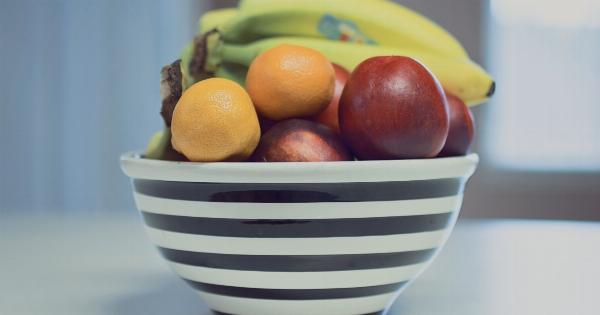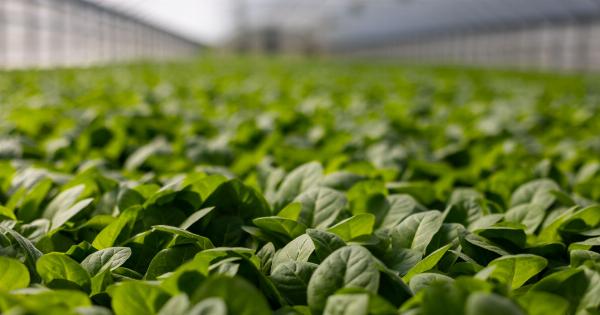Eating a balanced diet that includes plenty of fruits and vegetables is key to maintaining good health. They provide essential nutrients, vitamins, and minerals that are vital for our overall well-being.
However, it’s important to understand the correct serving size for fruits and vegetables to ensure we are getting the right amount of these nutritious foods. In this article, we will explore how to determine the appropriate serving size for fruits and vegetables.
Why is Serving Size Important?
Before delving into the specifics of determining serving sizes for fruits and vegetables, it’s crucial to understand why serving size matters.
All foods, including fruits and vegetables, provide different amounts of calories, vitamins, minerals, and other nutrients. Consuming an appropriate serving size helps us balance our nutrient intake and maintain a healthy weight.
If we consume more than the recommended serving size, we may unknowingly consume excess calories, which can lead to weight gain and other health issues like obesity, heart disease, and diabetes.
On the other hand, if we eat fewer than the recommended serving size, we may deprive our bodies of the essential nutrients they need to function optimally.
What is the Recommended Serving Size?
The recommended serving size for fruits and vegetables can vary depending on the specific type and form.
It’s important to note that serving sizes are usually measured in household measurements such as cups, ounces, or pieces, as they are easier to visualize and understand.
Calculating Serving Sizes for Fresh Fruits
When it comes to fresh fruits, the serving size is typically measured in cups or pieces. Here are some general guidelines:.
1. Berries
A serving of berries, such as strawberries, blueberries, or raspberries, is usually around 1 cup.
2. Citrus Fruits
Citrus fruits like oranges, grapefruits, and tangerines have an average serving size of one medium fruit.
3. Apples and Pears
An average-sized apple or pear is considered one serving.
4. Bananas
A small to medium-sized banana is generally a single serving.
5. Grapes
About 1 cup of grapes, both green and red, makes up a serving.
Calculating Serving Sizes for Fresh Vegetables
When it comes to fresh vegetables, serving sizes are measured in cups or ounces. Here are some guidelines:.
1. Leafy Greens
One cup of raw leafy greens, such as spinach, lettuce, or kale, counts as a single serving.
2. Cruciferous Vegetables
Cruciferous vegetables, including broccoli, cauliflower, and Brussels sprouts, also have a serving size of 1 cup, whether raw or cooked.
3. Root Vegetables
Root vegetables like carrots, beets, and sweet potatoes typically have a serving size of ½ cup when cooked or sliced.
4. Peppers
One medium-sized bell pepper or 7 mini sweet peppers make up a single serving.
5. Tomatoes
A medium-sized tomato or a cup of cherry tomatoes is considered a serving.
Calculating Serving Sizes for Processed Fruits and Vegetables
Processed fruits and vegetables, such as canned or frozen options, may have slightly different serving sizes due to variations in preparation and packaging. Always check the nutrition label for accurate serving size information.
Here are some general guidelines:.
1. Canned Fruits
A serving of canned fruits is usually around ½ to ¾ cup, depending on the specific fruit.
2. Canned Vegetables
For canned vegetables, a serving is typically ½ cup, but it can vary depending on the type of vegetable.
3. Frozen Fruits and Vegetables
Many frozen fruits and vegetables have a serving size of ½ to 1 cup, depending on the variety.
Additional Tips for Determining Serving Sizes
While the guidelines provided above serve as a starting point for determining serving sizes, there are a few additional factors to consider:.
1. Nutrient Density
Some fruits and vegetables are more nutrient-dense than others. For example, leafy greens like spinach or kale provide more vitamins and minerals per serving compared to iceberg lettuce.
Consider the nutrient density of the fruits and vegetables you consume to ensure you are getting the most out of each serving.
2. Personal Needs
Individuals with different calorie needs or dietary goals may require larger or smaller serving sizes.
For example, someone with higher energy requirements may need to consume more servings of fruits and vegetables compared to someone with lower energy needs.
3. Cooking and Preparation Methods
Cooking, chopping, or blending fruits and vegetables can affect the final serving size. For example, a cup of raw spinach may significantly reduce in volume when cooked.
Taking into account the changes in serving size caused by different preparation methods is essential.
Conclusion
Determining the appropriate serving size for fruits and vegetables is crucial for maintaining a well-balanced diet.
By understanding the recommended serving sizes for various fruits and vegetables, you can ensure you are getting all the necessary nutrients while managing your calorie intake. Remember that these serving sizes act as general guidelines, and individual needs may vary. Consult with a healthcare professional or registered dietitian for personalized recommendations based on your specific requirements.





























